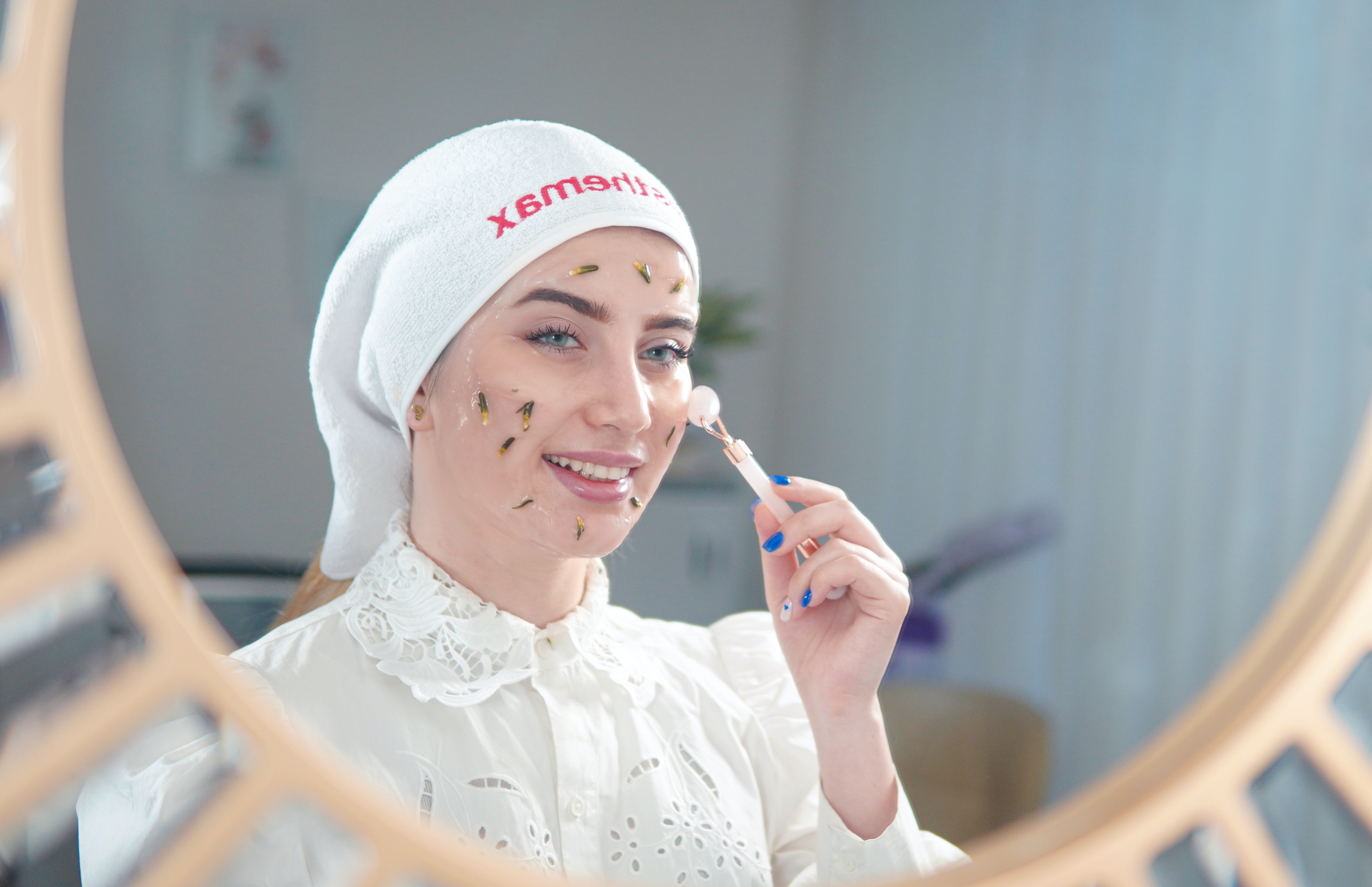Acne is a common skin condition that affects millions of people worldwide. It can be frustrating, embarrassing, and challenging to treat. However, understanding the causes of acne and implementing effective skincare practices can help you achieve clear, healthy skin. In this comprehensive guide, we will explore the causes of acne, prevention tips, treatments, and remedies, and provide a Q&A section to address common questions related to acne. By diving deeper into each topic, we aim to provide you with valuable information to help you in your journey to clear skin.
Understanding Acne
Causes of acne
a. Hormonal changes: Hormonal fluctuations during puberty, menstruation, pregnancy, and the use of oral contraceptives can cause acne by increasing sebum production and promoting inflammation.
b. Excess oil production: Overactive sebaceous glands produce too much oil, which can clog pores and lead to the development of acne.
c. Bacteria: Propionibacterium acnes (P. acnes) is a bacteria that lives on the skin and can cause inflammation and infection when it multiplies in clogged pores.
d. Dead skin cells: The accumulation of dead skin cells on the skin's surface can clog pores and contribute to the formation of acne.
e. Inflammation: Inflammation plays a crucial role in the development of acne, as it can cause redness, swelling, and pus-filled lesions.
Types of acne
a. Whiteheads: These are closed comedones, formed when a hair follicle becomes clogged with oil and dead skin cells, but remains beneath the skin's surface.
b. Blackheads: These are open comedones, which occur when the clogged hair follicle is exposed to air, causing the oil and dead skin cells to oxidize and turn black.
c. Papules: Small, red, inflamed bumps that may be tender to the touch.
d. Pustules: Similar to papules, but filled with pus, making them appear white or yellow at the center.
e. Nodules: Large, hard, painful lumps beneath the skin's surface, resulting from the build-up of oil, dead skin cells, and bacteria deep within the hair follicle.
f. Cysts: Severe form of acne characterized by large, painful, pus-filled lesions that can cause scarring.
Prevention Acne
Maintain a consistent skincare routine
a. Cleansing: Gently cleanse your skin twice daily with a mild, non-comedogenic cleanser to remove dirt, oil, and makeup. Over-cleansing or using harsh cleansers can strip the skin of its natural oils, leading to increased oil production and acne.
b. Exfoliating: Regularly exfoliate your skin with a gentle scrub or a chemical exfoliant like salicylic acid or glycolic acid. This helps remove dead skin cells and unclog pores, preventing the formation of acne.
c. Moisturizing: Keep your skin hydrated by using a lightweight, oil-free, and non-comedogenic moisturizer. Even oily skin needs hydration to maintain balance and prevent overproduction of oil.
d. Sun protection: Protect your skin from the sun's harmful UV rays by wearing a broad-spectrum sunscreen with an
SPF of 30 or higher every day. Sun exposure can worsen acne and cause hyperpigmentation, making existing acne scars more prominent.
Choose the right skincare products
a. Non-comedogenic: Look for products labeled as non-comedogenic, which means they won't clog your pores and contribute to acne formation.
b. Oil-free: Opt for oil-free products, especially if you have oily or acne-prone skin, to avoid adding excess oil to your skin.
c. Fragrance-free: Fragrances can be irritating to sensitive or acne-prone skin, so choose fragrance-free products to minimize the risk of irritation and breakouts.
Lifestyle changes
a. Balanced diet: Consume a healthy, balanced diet that includes plenty of fruits, vegetables, whole grains, and lean proteins. While the relationship between diet and acne is still being studied, some research suggests that a diet high in sugar, dairy, and processed foods may contribute to acne.
b. Regular exercise: Engage in regular physical activity to help manage stress, improve circulation, and promote overall health. Remember to cleanse your skin after sweating to prevent the accumulation of dirt and oil that can lead to breakouts.
c. Stress management: Practice stress management techniques such as meditation, deep breathing exercises, and yoga to help reduce stress-related hormonal fluctuations that can contribute to acne.
d. Hydration: Drink plenty of water to keep your skin hydrated and support overall health. Proper hydration can help your skin maintain its natural balance and reduce the appearance of acne.
Effective Treatments and Remedies for Acne
Over-the-counter treatments
a. Salicylic acid: A beta-hydroxy acid that exfoliates the skin, unclogs pores, and reduces inflammation. It is commonly found in cleansers, toners, and spot treatments for acne.
b. Benzoyl peroxide: An antimicrobial agent that kills acne-causing bacteria and helps remove excess oil and dead skin cells. It is available in various concentrations and can be found in cleansers, creams, and spot treatments.
c. Alpha hydroxy acids: These include glycolic and lactic acids, which work by exfoliating the skin and promoting cell turnover. This helps to unclog pores, reduce inflammation, and improve the appearance of acne scars.
d. Retinoids: Derived from vitamin A, retinoids help to unclog pores, reduce inflammation, and promote cell turnover. Over-the-counter retinoids like adapalene are available in gels and creams and can be used as a topical treatment for acne.
Prescription treatments
a. Topical antibiotics: Clindamycin and erythromycin are examples of topical antibiotics that can be prescribed by a dermatologist to help kill acne-causing bacteria and reduce inflammation.
b. Oral antibiotics: Tetracycline, doxycycline, and minocycline are examples of oral antibiotics that can be prescribed to help treat moderate to severe acne by reducing inflammation and targeting acne-causing bacteria.
c. Isotretinoin: A powerful oral medication, isotretinoin (formerly known as Accutane) is used to treat severe, nodular acne that has not responded to other treatments. It works by reducing sebum production, inflammation, and the growth of acne-causing bacteria.
d. Hormonal therapies: For women experiencing hormonal acne, oral contraceptives or spironolactone may be prescribed to help regulate hormonal fluctuations and reduce acne breakouts.
Home remedies
a. Tea tree oil: A natural antibacterial and anti-inflammatory agent, tea tree oil can be diluted and applied to the skin to help reduce redness and inflammation
associated with acne. However, be cautious with the concentration and always dilute tea tree oil before applying it to the skin, as it can be irritating if used undiluted.
b. Green tea extract: Rich in antioxidants and anti-inflammatory properties, green tea extract can be used topically to help reduce inflammation and redness associated with acne. Some skincare products already contain green tea extract, or you can make a DIY green tea toner by steeping green tea, letting it cool, and applying it to your skin with a cotton pad.
c. Aloe vera: Known for its soothing and anti-inflammatory properties, aloe vera can be applied directly to the skin to help reduce redness and inflammation. It can be used in combination with other acne treatments, as it also has moisturizing properties that can help prevent dryness and irritation.
d. Honey and cinnamon: A mixture of honey and cinnamon can be applied as a mask to help reduce inflammation and kill acne-causing bacteria. Mix equal parts honey and cinnamon, apply to the affected areas, leave on for 10-15 minutes, and rinse off with warm water.
Professional treatments
a. Chemical peels: These involve the application of a chemical solution to the skin, causing it to exfoliate and eventually peel off. This helps to unclog pores, reduce inflammation, and improve the appearance of acne scars. Chemical peels can vary in strength and should be performed by a professional.
b. Microdermabrasion: A non-invasive procedure that uses a machine to exfoliate the top layer of skin, promoting cell turnover and reducing the appearance of acne scars. Microdermabrasion can also help unclog pores and improve the overall texture of the skin.
c. Laser therapy: Lasers can be used to target acne-causing bacteria, reduce inflammation, and stimulate collagen production to help improve the appearance of acne scars. This treatment should only be performed by a licensed professional and may require multiple sessions for optimal results.
d. Corticosteroid injections: For severe, painful cystic acne, a dermatologist may recommend corticosteroid injections to help reduce inflammation and promote healing. This treatment can provide rapid relief but should only be performed by a professional, as improper injection techniques can lead to scarring or skin indentations.
Q&A Section:
Q: How long does it take for acne treatments to work?
A: The time it takes for acne treatments to work can vary depending on the individual and the treatment being used. Over-the-counter treatments and home remedies may show results within a few weeks, while prescription medications and professional treatments may take several months to show significant improvement.
Q: Can I pop or squeeze my pimples?
A: It is generally not recommended to pop or squeeze pimples, as this can lead to further inflammation, scarring, and the spread of bacteria. Instead, try using over-the-counter treatments or consult a dermatologist for appropriate treatments.
Q: How can I prevent acne scars?
A: To prevent acne scars, it is essential to avoid picking or popping pimples, follow a consistent skincare routine, and use sun protection daily. If you're dealing with existing acne scars, consult a dermatologist to discuss potential treatments such as chemical peels, microdermabrasion, or laser therapy.
Q: Does diet affect acne?
A: While the relationship between diet and acne is still not entirely understood, some studies suggest that a diet high in sugar, dairy, and processed foods may contribute to acne. A balanced diet rich in fruits, vegetables, whole grains, and lean proteins may help improve skin health and reduce the risk of acne breakouts.









